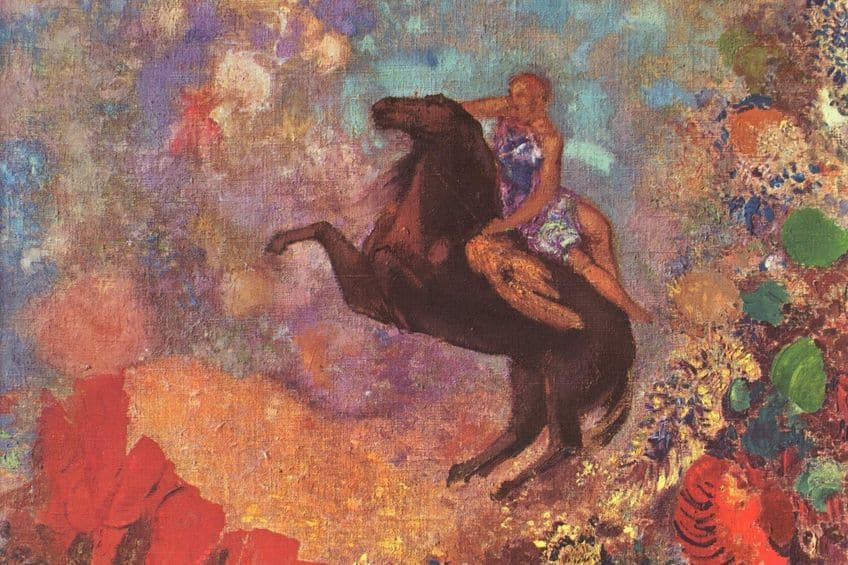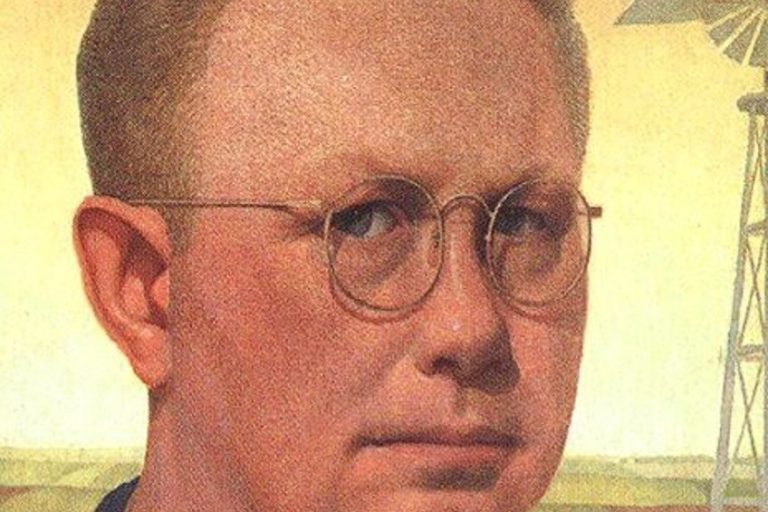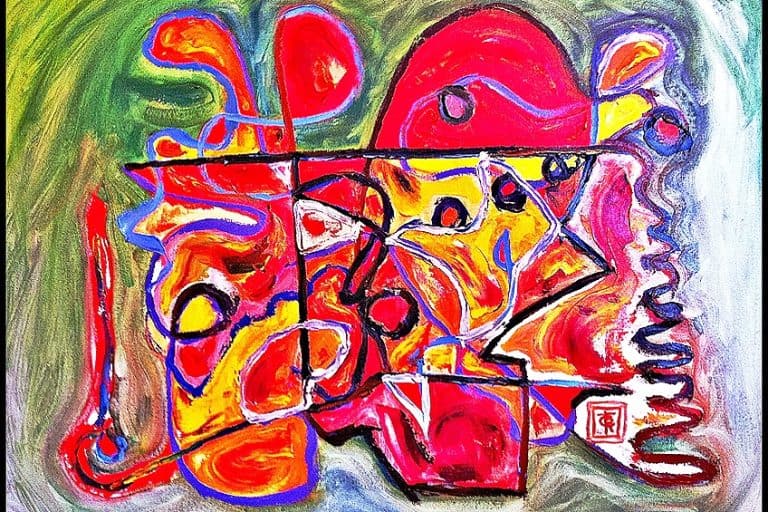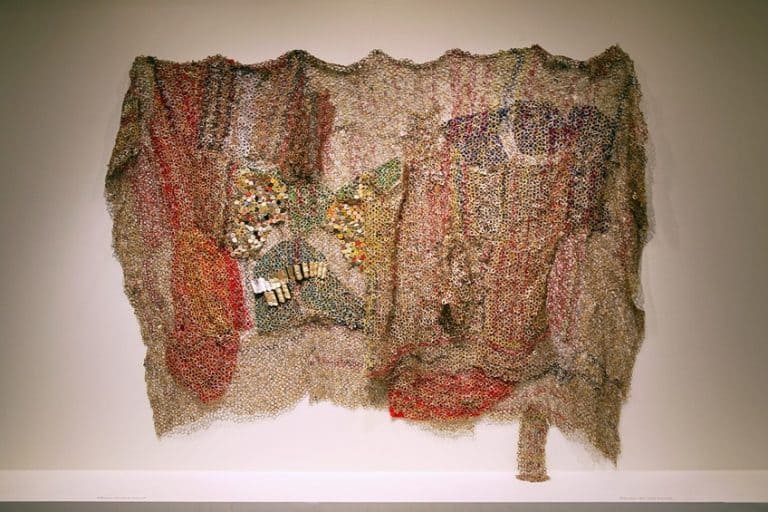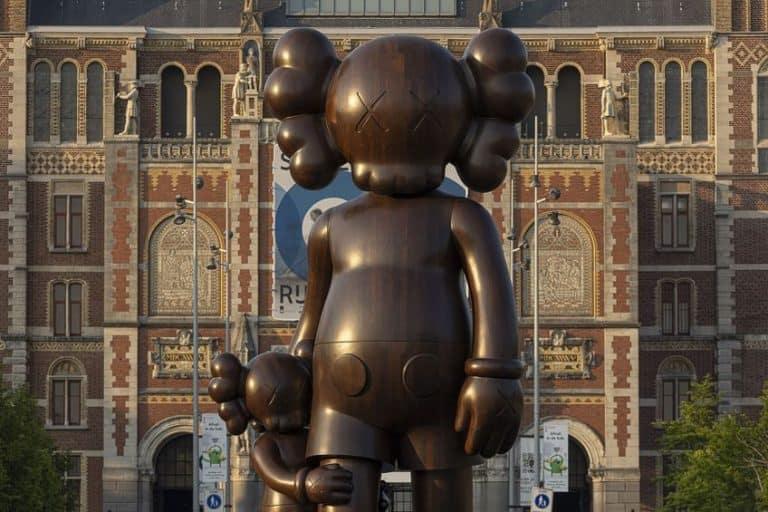Odilon Redon – A Visionary and Imaginative Artist Biography
Odilon Redon, a visionary French artist of the late 19th and early 20th centuries, left an indelible mark on the art world with his captivating and imaginative works. Born in Bordeaux in 1840, Redon initially gained recognition for his charcoal drawings known as “noirs,” which often explored themes of the macabre and the fantastical. However, it was his later foray into color, particularly his vivid pastels and oils, that truly showcased his mastery of symbolism and emotion. Redon’s art defied easy categorization, blending elements of Symbolism, Surrealism, and even early abstraction, making him a pivotal figure in the transition from traditional to modern art. This article delves into the life, influences, and iconic creations of Odilon Redon, illuminating his enduring impact on artistic expression.
Key Takeaways
- Odilon Redon emerged as a pivotal figure in French Symbolism with a body of work that transcends simple categorization.
- Incorporating a range of media, including lithography and oil pastels, his art captures the interplay between darkness and color, revealing a profound interest in the psychological and the fantastic.
- Redon’s legacy extends beyond his lifetime, influencing future art movements and continuously prompting exploration into the realms of dream and fantasy.
Biographical Overview
| Birth | April 20, 1840 |
| Death | July 6, 1916 |
| Place of Birth | Bordeaux, France |
| Genre of Work | Symbolism and Post-Impressionism |
Odilon Redon was a multifaceted French artist widely acknowledged for his significant contributions to the Symbolist movement. Born on April 20, 1840, in Bordeaux, Redon’s artistic journey was distinguished by a unique blend of the visionary and the enigmatic. With a penchant for the fantastic and a nod to the psychological, Redon’s oeuvre includes an extensive range of media such as charcoal (“noirs”), lithography, pastels, and oil paintings. His artistic evolution showcases a striking duality: from the dark, monochromatic early works to the later vibrant explorations of color and form, Redon’s art constantly played at the intersection of dreams and reality.

While initially exploring dark, mysterious themes in his charcoals and lithographs, Redon later shifted toward vivid color and dream-like subjects in his pastels and oil paintings. His works often evoked an ethereal, otherworldly realm, where the line between the real and the imaginary was beautifully blurred. His flowers and mythological figures are exemplars of an introspective style that sought to represent the unseen rather than the seen world. Redon remains an influential figure in art, often regarded as a precursor to Surrealism and a bridge between the 19th-century Symbolist movement and modern art.
Early Life and Artistic Influences
Odilon Redon was born Bertrand Jean Redon on April 20, 1840, in Bordeaux, France. Growing up in a prosperous family, he adopted the nickname “Odilon” from his mother, Odile. Redon began his formal artistic education under the guidance of Stanislas Gorin who taught him drawing.
However, it was his apprenticeship with Rodolphe Bresdin, a master printmaker, that profoundly shaped Redon’s early charcoal works, known as his noirs.
Career and Artistic Evolution
His career, which spans the latter half of the 19th century and into the first decades of the 20th century, shows a trajectory divided into two divergent styles. Post his service in the Franco-Prussian War, Redon’s initial oeuvre is characterized by a pervasive use of charcoal, lending a dream-like quality to his noirs. As he developed, Redon transitioned into using oils and pastels, which allowed him to express a more colorful and luminous conception of the world. This period is noted for still lifes and mythological themes. His visionary works concern dream states and the imagination, positioning him within the Symbolist movement, which sought to express the ideas of the unconscious mind.

Collaborations and Contemporaries
Throughout his career, Redon was affiliated with various artists and literary figures. He was particularly influenced by Gustave Moreau, another leading Symbolist painter, under whose direction Redon’s use of color was likely emboldened. While not known for extensive collaborations, Redon’s work paralleled many artistic advancements of his time, and he remained in dialogue with other artists and the evolving movements, which eventually led to Surrealism and Dadaism.
His contemporaries included renowned artists such as Paul Gauguin and Henri Matisse, whose pursuit of expressing the internal world resonated with Redon’s own artistic endeavors.
Artistic Style and Techniques
Odilon Redon’s evolution as an artist is marked by a distinctive journey from somber monochromatic works to vibrant color compositions, embracing symbolism, pastels, and oils to explore themes beyond the visible world.

Symbolism and the Noirs Period
Redon emerged as a prominent figure in Symbolist art, a movement that sought to convey the ideas of dreams and the imagination beyond the physical reality. During his Noirs period, he primarily utilized charcoal and lithography to create evocative images that often delved into the realm of fantasy and darkness.
This engagement with symbolism allowed Redon to express not what was seen, but what was perceived internally.
From Darkness to Color
In stark contrast to the Noirs period, Redon’s later career was marked by a transition from darkness to color. Inspired by the natural world, he began integrating flowers and natural elements into his work. This shift was also influenced by Japanism, mirroring the Japanese art’s flat areas of strong color. Redon’s immersion in color signified a departure from his earlier phase, symbolizing a rebirth into a new realm of creativity suffused with life and delicate hues.
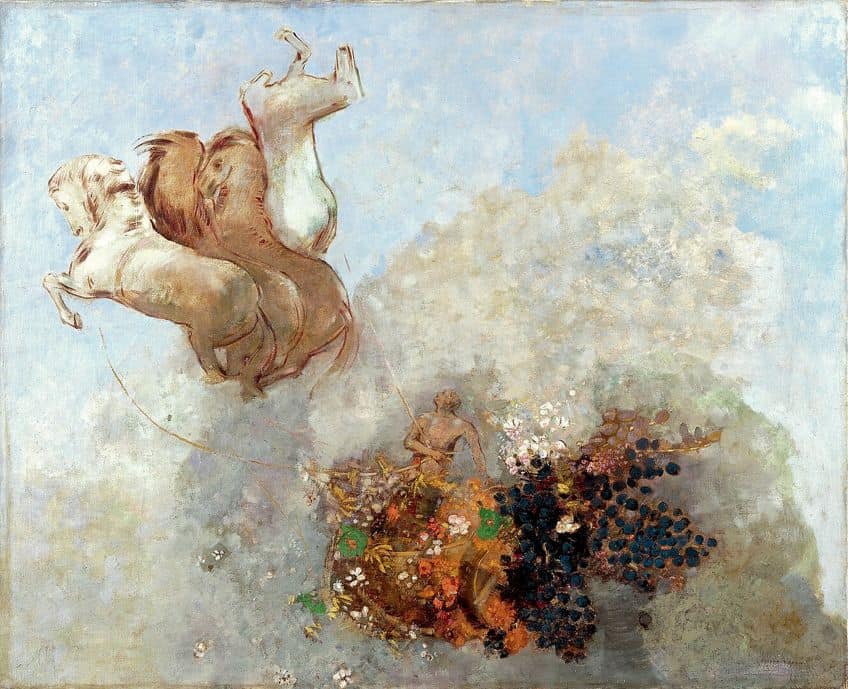
Pastels and Oils
During the final stage of his artistic career, Redon predominantly worked in pastels and oils, mediums that complemented his fascination with color and allowed for richer textural and chromatic variations. He employed these mediums to masterfully create compositions flush with fantasy and poetic expression.
Flowers became a recurring subject in his pastel works—a symbol of the unseen world—and demonstrated his command over vibrant oil pigments, echoing the transition from realism to the boundaries of surrealism where the elements of dreams and imagination continued to play a central role in his creations.
Major Works and Themes
Odilon Redon’s oeuvre is celebrated for its synthesis of the dreamlike with reality, often integrating mythological subjects and florals into his compositions that invite viewers into a realm of the subconscious. His work encompasses a variety of mediums, including pastels, lithographs, and oil paintings, where he illustrates profound narratives and themes through a Symbolist lens.

Portraits and Mythological Themes
Redon’s fascination with the spiritual and mythical materialized in works like Guardian Spirit of the Waters, which evokes a mystical ambiance through his depiction of an ethereal being. Mythology also plays a central role in Redon’s vision, where he conjures images from literature and legends. In The Temptation of Saint Anthony, he deftly uses his brush to illustrate the inner turmoil and hallucinations of the saint, each stroke adding to the narrative intensity. Another significant mythological theme is evident in Redon’s portrayal of Ophelia, the tragic figure from Shakespeare’s Hamlet. This work adds to the diverse range of nuances in his portrayal of characters that stem from classical literature.
Boldly, he uses color and form to convey the emotional weight of Ophelia’s narrative.
Floral and Dreamlike Compositions
A departure from human subjects reveals Redon’s penchant for the natural world with works like Flowers, which features a luxuriance of floral diversity rendered through rich color contrasts and shadowing that appear almost sentient. Similarly, in the dream motifs surface repeatedly in Redon’s art, where he marries botanical elements with fantastical imagery. This is particularly evident in his piece The Dream, where the viewer is transported to a meditative, surreal space that teases the edge of consciousness.

Redon’s lithograph, The Eye, Like a Strange Balloon Moves Towards Infinity, epitomizes his dreamlike approach, setting forth an odyssey of an eye surrounded by a stark yet compelling landscape. Furthermore, the serenity of myth comes alive in the pastel Sita, embodying a blend of Eastern mythological motifs into Redon’s Symbolist narrative, showcasing his range of thematic exploration and narrative styling.
Legacy and Influence
The works of Odilon Redon possess a transformative power that has cemented his standing within art institutions and significantly altered the course of modern art and culture.
His influence is palpable across various realms of creative expression, from fine arts to the broader cultural oeuvre.
In Museums and Collections
Redon’s masterpieces are collected and exhibited globally, with prestigious institutions holding his works. The Musée d’Orsay in Paris is particularly notable for its substantial collection of Redon’s pieces, which showcase his journey from the ‘noirs’ to his brightly colored pastel works. Other museums that celebrate Redon’s legacy include The Metropolitan Museum of Art in New York and The Art Institute of Chicago. His art is considered a visual treasure and is meticulously preserved for public appreciation and scholarly examination.

Impact on Modern Art and Culture
Within the context of modern art, Redon stands as a figure who both inspired and paralleled the developments of movements such as the Nabis—artists who deeply valued his expressive handling of color—and the Surrealists, who saw in his work a precursor to their explorations of the unconscious. Esteemed contemporaries like Paul Gauguin and Henri Matisse acknowledged Redon’s groundbreaking approach, which moved beyond the visible world to depict the ineffable and the dreamlike.
Such endorsements by eminent artists of his time solidified his impact on the course of art history.
Influence of Odilon Redon’s Art Today
To this day, Redon’s art transcends time, continuing to evoke discussion and admiration. His unique blend of reality and the imaginary realm has marked him as a visionary who paved the way for future exploration in the arts. Contemporary artists and critics reference his works, underscoring his enduring presence in discourses about the interplay between the conscious mind and the mystical aspects of human experience. Redon’s legacy lives on as his art continues to inspire and challenge the boundaries of creativity.

Odilon Redon’s legacy as an artist is a testament to his boundless creativity and profound exploration of the human psyche. His ability to evoke complex emotions through his use of color, symbolism, and fantastical imagery has cemented his place as a visionary in art history. From his early monochromatic works to his vibrant and ethereal later pieces, Redon’s journey encapsulates the evolution of artistic expression during a transformative period in art. His influence continues to resonate with contemporary artists and enthusiasts, ensuring that his contributions to the world of art remain timeless and impactful.
Frequently Asked Questions
What Artistic Style Is Odilon Redon Best Known For?
Odilon Redon is best known for his contribution to the Symbolist movement. His artwork is characterized by a blend of dreamlike, fantastic imagery and a personal expression of the psychological and the spiritual.
What Techniques Did Odilon Redon Employ in His Artwork?
Redon utilized various techniques in his artwork, including lithography, pastel, and oil painting. He is renowned for his noirs, or black-and-white lithographs, and his expert use of vibrant colors in his later pastels and oil paintings.
What Are Some of the Prominent Themes in Odilon Redon’s Paintings?
Prominent themes in Redon’s paintings include dreams, fantasy, and the exploration of one’s inner psyche. His work often features mystical creatures and strange, macabre elements which serve to evoke emotional responses from the viewer.
How Did Odilon Redon Contribute to the Symbolist Movement?
Redon’s contribution to the Symbolist movement lies in his emphasis on the expression of emotional experiences over the representation of the external world. He created visual representations of literary ideas, symbolism, and the exploration of imagination, thus advancing the movement’s ethos of depicting the mystical and the unseen.
Isabella studied at the University of Cape Town in South Africa and graduated with a Bachelor of Arts majoring in English Literature & Language and Psychology. Throughout her undergraduate years, she took Art History as an additional subject and absolutely loved it. Building on from her art history knowledge that began in high school, art has always been a particular area of fascination for her. From learning about artworks previously unknown to her, or sharpening her existing understanding of specific works, the ability to continue learning within this interesting sphere excites her greatly.
Her focal points of interest in art history encompass profiling specific artists and art movements, as it is these areas where she is able to really dig deep into the rich narrative of the art world. Additionally, she particularly enjoys exploring the different artistic styles of the 20th century, as well as the important impact that female artists have had on the development of art history.
Learn more about Isabella Meyer and the Art in Context Team.
Cite this Article
Isabella, Meyer, “Odilon Redon – A Visionary and Imaginative Artist Biography.” Art in Context. April 15, 2024. URL: https://artincontext.org/odilon-redon/
Meyer, I. (2024, 15 April). Odilon Redon – A Visionary and Imaginative Artist Biography. Art in Context. https://artincontext.org/odilon-redon/
Meyer, Isabella. “Odilon Redon – A Visionary and Imaginative Artist Biography.” Art in Context, April 15, 2024. https://artincontext.org/odilon-redon/.


